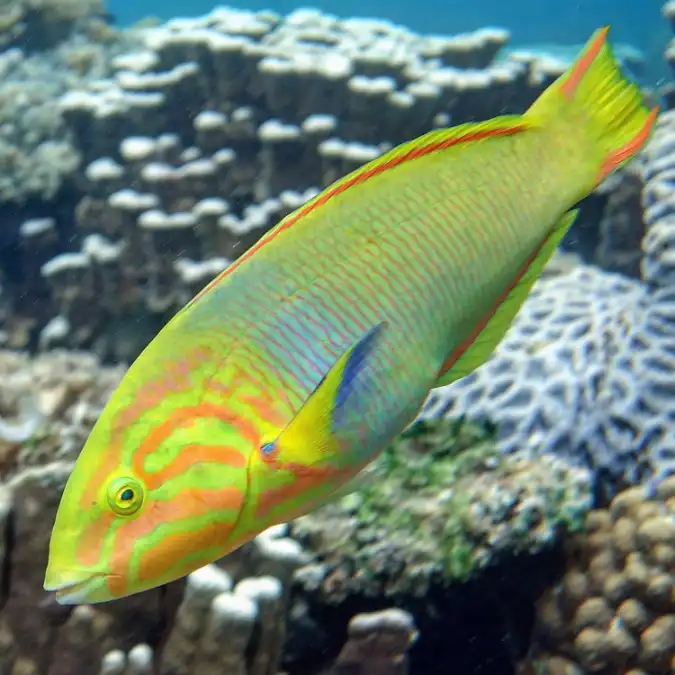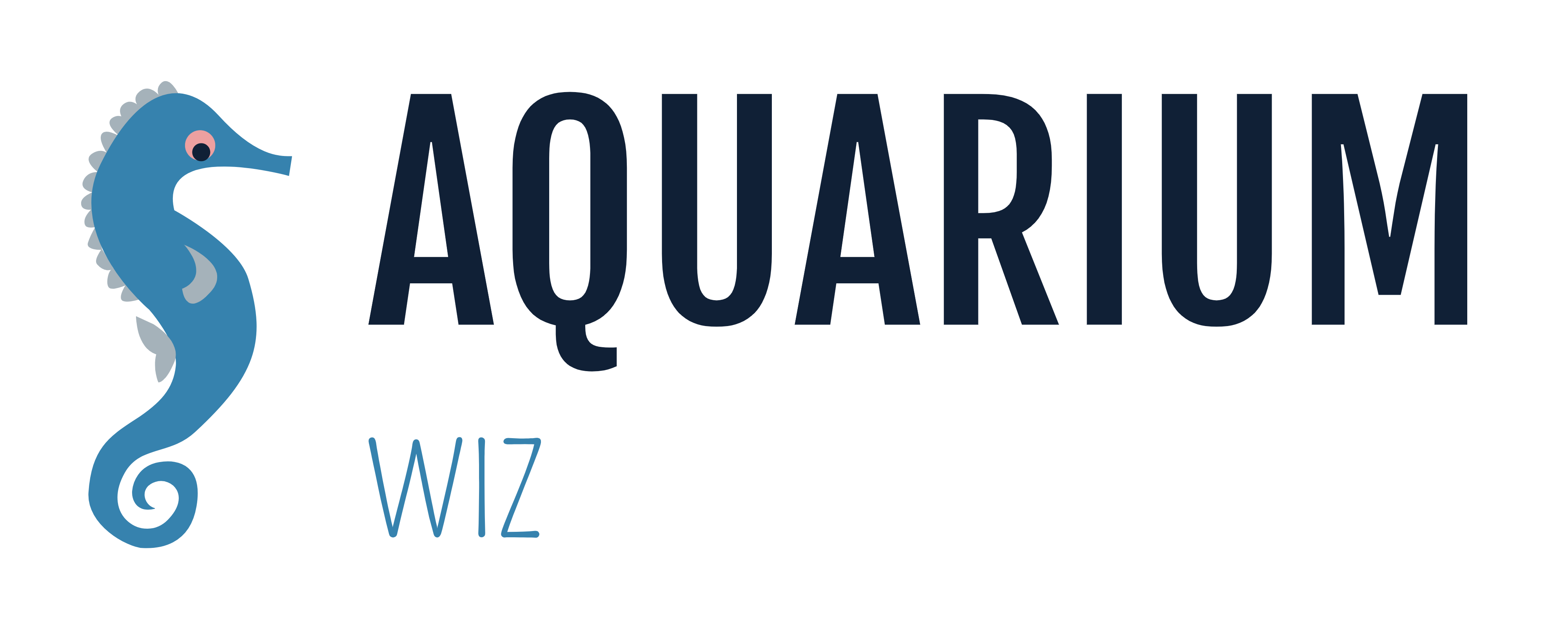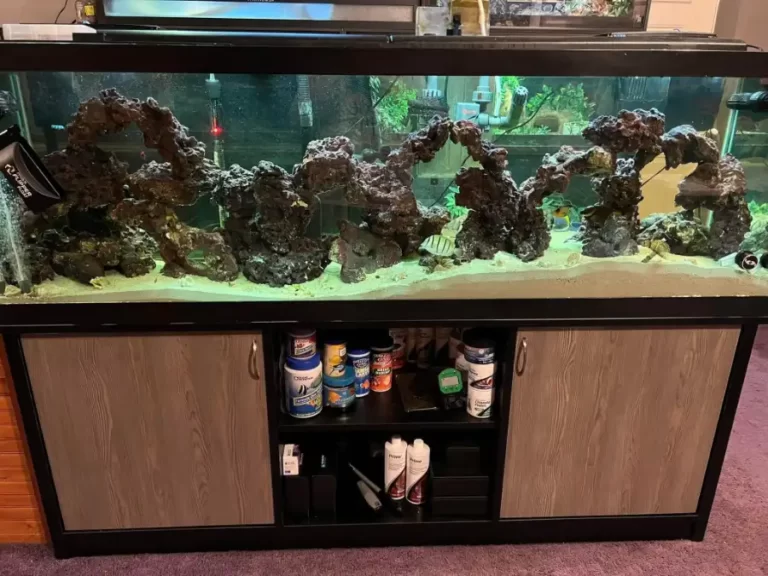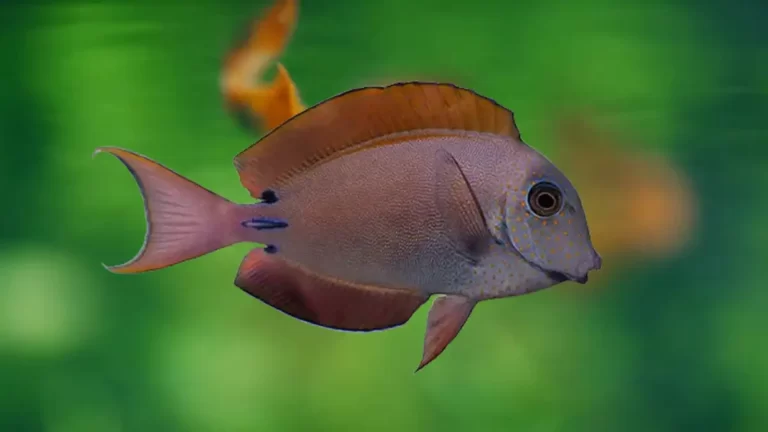Banana Wrasse Care | Tank Setup, Feeding, Diseases & Prevention
We will delve into the intricacies of Banana Wrasse care, ensuring you have all the tools and knowledge at your disposal to create a thriving aquatic environment. Whether you’re a seasoned aquarist looking to diversify your collection or a newcomer eager to embark on a fascinating journey, you’ve come to the right place.
Join us as we peel back the layers of Banana Wrasse care, uncovering the secrets to their health and happiness, and discover how to cultivate a slice of the ocean’s brilliance in your very own aquarium.
From tank setup and water quality to feeding habits and social dynamics, we will cover it all, with a focus on optimizing the care you provide.

Quick Facts
The Banana Wrasse, also known as the Yellow-brown Wrasse, Sunset Wrasse, or Yellow Wrasse, is a popular saltwater fish among aquarium enthusiasts. Here are some quick facts about this beautiful fish:
| Scientific Name: | Thalassoma lutescens |
| Family: | Labridae |
| Color: | yellow, blue, green |
| Fish Diet: | Carnivore |
| Aggressiveness: | Highly Aggressive |
| Reef Safe: | No |
| Minimum Tank Size: | 125 gal |
| Max Size: | 12″ |
| Diet | Carnivore |
| Water Conditions | sg 1.020-1.025, 72-78° F, dKH 8-12, pH 8.1-8.4 |
The Banana Wrasse is a carnivorous fish that requires a varied diet of high-quality marine meaty foods. It is not reef safe and should be kept with other aggressive fish in a large aquarium of at least 125 gallons.
As an adult, the Banana Wrasse takes on a yellow appearance if female and a blue appearance if male. Both sexes have facial markings in green and fine vertical striping along the body. The fins are very colorfully marked.
Overall, the Banana Wrasse is a beautiful and easy-to-care-for fish that can make a great addition to a large saltwater aquarium with other aggressive tank mates.
Banana Wrasse Care
Banana wrasses are an excellent addition to any saltwater aquarium. They are easy to care for and have a striking appearance that makes them stand out in any tank. In this section, we will discuss the necessary care for banana wrasses, including tank size, water parameters, and tank setup.
Tank Size
Banana wrasses are active swimmers and require a large tank to thrive. The minimum tank size for a single banana wrasse is 125 gallons. If you plan to keep multiple banana wrasses, you will need to increase the tank size accordingly. It is recommended to provide plenty of open swimming space for these fish, as well as ample hiding places.
Water Parameters
Banana wrasses are hardy fish that can tolerate a range of water parameters. However, maintaining stable water conditions is essential for their health and well-being. The ideal water temperature for banana wrasses is between 75-82°F. The pH level should be between 8.1-8.4, and the salinity should be around 1.023-1.025.
Tank Setup
Banana wrasses are active swimmers and require plenty of open swimming space. It is recommended to provide a sandy substrate, as they like to burrow and sleep in the sand at night. Live rock is also essential, as it provides a natural hiding place and helps to maintain water quality. Banana wrasses are not reef safe and may eat small invertebrates, so it is recommended to keep them in a fish-only tank.

Food & Diet
A well-balanced diet is essential for the health and longevity of your banana wrasse. As a carnivorous fish, they require a diet rich in protein.
Feeding Schedule
Banana wrasses should be fed 1-2 times daily with only as much as they can eat in 1-2 minutes. Some species may need 2-3 feedings per day. It is important to note that overfeeding can lead to health problems, including obesity and poor water quality.
Food Options
The banana wrasse diet should include vitamin-enriched frozen mysis shrimp, vitamin-enriched frozen brine shrimp, and other meaty foods along with a high-quality marine flake and marine pellet food. Offering a varied diet will ensure proper nutritional balance.
Thawing Frozen Food
It is important to thaw frozen food before feeding it to your banana wrasse. This can be done by placing the food in a container with aquarium water or by using a strainer to rinse the food under running water.
Personal Experience
Buffy has found that her banana wrasse enjoys a variety of food options, including live brine shrimp and krill. She has also noticed that her wrasse becomes more active and colorful after feeding. Buffy recommends experimenting with different food options to find what works best for your banana wrasse.
Common Possible Diseases & Prevention
Banana wrasses are generally hardy and not prone to diseases if kept in a clean and healthy environment. However, there are still some common diseases that owners should be aware of in order to prevent their fish from getting sick.
Common Diseases
- Ich (White Spot Disease): This is a common parasitic disease that can affect many types of fish, including banana wrasses. It appears as white spots on the fish’s body and fins. If left untreated, it can be fatal.
- Velvet Disease: Another parasitic disease, velvet disease appears as a yellowish-brown dust on the fish’s body. It can cause lethargy, loss of appetite, and rapid breathing.
- Marine Ich: Similar to Ich, Marine Ich is caused by a different parasite and appears as small white spots on the fish’s body. It can also cause secondary infections and lethargy.
- Fin Rot: This bacterial disease appears as a frayed or disintegrating fin. It can be caused by poor water quality or injury.
- Pop-Eye: Pop-eye is a symptom of an underlying issue, such as poor water quality or bacterial infection. It appears as one or both eyes bulging out of the fish’s head.
Prevention
To prevent these diseases from occurring in your banana wrasse, it is important to maintain a clean and healthy environment. Here are some tips to keep your fish healthy:
- Regular Water Changes: Regular water changes can help maintain good water quality and reduce the risk of bacterial infections.
- Quarantine New Fish: Quarantine any new fish for at least two weeks before introducing them to your main tank. This can help prevent the spread of diseases.
- Avoid Overcrowding: Overcrowding can lead to stress and poor water quality, which can make your fish more susceptible to diseases.
- Feed a Balanced Diet: Feeding your fish a balanced diet can help boost their immune system and prevent diseases.
- Maintain Proper Filtration: Proper filtration can help remove harmful toxins and bacteria from the water.
By following these tips, you can help keep your banana wrasse healthy and disease-free. If you notice any signs of illness, it is important to take action quickly to prevent the disease from spreading to other fish in your tank.
Related Post: Checkerboard Wrasse Care, Tank Setup Breeding, Diseases & Prevention
Behavior & Temperament
Banana wrasses are known for their active and curious nature. They are highly active swimmers and will spend most of their time exploring their surroundings. They are known to be jumpers, so it is essential to keep the tank covered at all times.
Banana wrasses are generally considered to be peaceful towards other fish, but they can become territorial towards other wrasses or fish with a similar body shape. It is best to keep them with other peaceful fish that are not too similar in appearance.
It is important to note that banana wrasses are not reef safe. They will eat small invertebrates such as shrimp, crabs, and snails, and may also nip at corals and other sessile invertebrates. It is best to keep them in a fish-only or FOWLR (Fish Only With Live Rock) setup.
When it comes to feeding, banana wrasses are not picky eaters. They will readily accept a variety of foods, including frozen and live foods, as well as high-quality flake and pellet foods. It is important to feed them small, frequent meals throughout the day to ensure they are getting enough to eat.
Frequently Asked Questions [FAQs]
What is a Banana Wrasse, and what makes it unique in the aquarium hobby?
A Banana Wrasse (Thalassoma lutescens) is a colorful marine fish known for its striking yellow coloration and vibrant personality. It stands out in aquariums due to its dazzling appearance and active swimming patterns.
What do Banana Wrasses eat, and how often should they be fed?
They are carnivorous and should be fed a varied diet that includes high-quality pellets, frozen foods like brine shrimp and mysis shrimp, and occasionally live foods. Feed them 2-3 times a day in small portions.
Can Banana Wrasses be kept in a community aquarium?
Banana Wrasses can be kept with other peaceful, non-aggressive species, but it’s important to choose tankmates carefully to prevent aggression. They may not tolerate other wrasse species, especially those with similar colors or body shapes.
Are there any common diseases or health issues I should watch out for in Banana Wrasses?
– Watch for common marine fish diseases like ich (white spot disease) and ensure excellent water quality to prevent health issues. Quarantining new arrivals can help prevent the introduction of diseases to your main aquarium.






